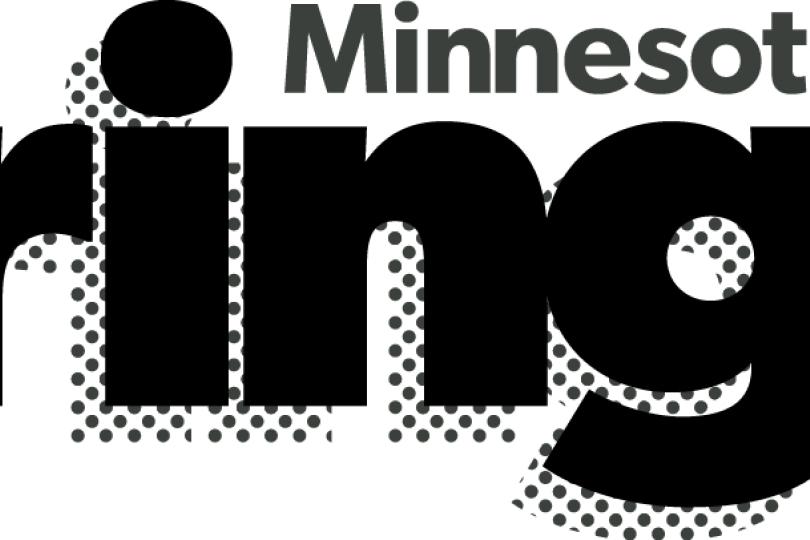“Fringe is more than the festival” —

Minnesota Fringe's Executive Director Dawn Bentley graciously met up with me this last week to discuss the festival this year. Dawn is a ball of creative and organizational energy (she met me right after running a half marathon!) and the changes she shared with me about Fringe this year. She also shared with me the future of the Minnesota Fringe and its commitment to artists.
The following interview has been edited for length and clarity.
ERIN: If you had one thing to change about the way Fringe is perceived, what would it be?
DAWN: We are the largest Fringe in North America. We fill a ton of seats, we have all these performances—these are interesting facts and important! But I would like the perception to start with how Fringe contributes to the living of artists. We put a quarter million dollars back into the local economy every year. We are a place for artists to expand, cultivate and grow in their craft. We are a gateway for audiences to fall in love with the performing arts. And then are all of those numbers – 142 shows, 735 performances over the course of 14 days, 2 festivals, and 300 volunteers. Those numbers are great, but I think that we contribute to the landscape of theater and performing arts in this town and in this state in a necessary way. I truly believe that this is a place that every artist, regardless of where you are in your journey, in your career—you don’t need to graduate from Fringe! This is always going to be that place that you can come back and you can celebrate, you can create, you can cultivate, and you can collaborate. It benefits what goes on in the theater community in the entire state.
ERIN: Yes, and as we said before we started the recording, more than 50% of the income to Fringe comes from ticket sales, correct? And then you go ahead and you plunge pack in 70% of that to the artists themselves. How does that work for Fringe’s bottom line?
DAWN: Well, it hasn’t for a couple of years. That is one of the reasons we went back to the single ticket system instead of the day pass system. After a couple years of data gathering, it became evident that the day pass was diluting the pay outs for artists—so we went back to single tickets. There is now a more direct correlation – people can directly support the artists on stage because they bought a ticket to that show. When you purchase a ticket to a Fringe show and you walk in, you should know that you are directly supporting those people on that stage. That you are having an impact on their lives and that you are demonstrating and actioning your values—you are demonstrating that you value what they do. There is something in Fringe for everyone. There are 142 shows between Fringe and Family Fringe, 735 performances, so there’s something for everyone. Some things are for no one, and that is OK too! So if you don’t want to see something that is also you actioning your value system. Sometimes people get upset if a favorite artist doesn’t get in the lottery, or maybe they don’t care for a topic of a particular show, but our audiences have the choice to action their values and beliefs and to support very directly to the artists they go to see. And our artists have the opportunity to step outside of their own comfort zone or even the comfort zone of the typical theater goer and put something on stage that then may not have an opportunity to anywhere else because of gatekeepers of all kinds—and we are not that! So this is a really unique intersection of circumstances. And I love that about it—it is free and open and honest and it is what art truly can be for anyone. Art is for everyone, and that the intersection between art and audience is a blurred line—that interaction is just as important as the art itself.
ERIN: Tell me about some of the changes that you have made to Fringe this year, and how you see this year’s line up as different from those in the past. What aspects are you most excited about adding? I suspect some of this is your new accessibility initiatives.
DAWN: So, changes to the Fringe Festival have pretty much been all around the ticketing system as I described – going back to single tickets, doing away with day passes, returning to the ability to buy a block of shows – like a 5 block pass or a 10 block pass – to be used in whatever way you like. Another change is having these passes transferable between Fringe and Family Fringe, and offsetting the dates to make Family Fringe and Fringe tandem festivals (as opposed to right on top of one another). That allows families with children to go to family Fringe and still feel like they have plenty of time to pick Fringe shows. Also we added additional accessibility. We are the first Fringe in North America to have open captioning during our festival – 10 shows will have open captioning. And that is a universal benefit. Much like everyone likes the dip in the curb on the side of the street that allows you to ride your bike up--that’s an accessibility change that came after ADA. Open captioning is also accessibility, and I think there are going to be a lot of people who use that in addition to the folks who have hearing impairment and really need it in order to enjoy the play.
Relaxed performances are also a big deal – we spent a year working with a relax performance consultant to understand how we can tailor Family Fringe shows to meet the needs of people who have sensory processing specificities that need to be addressed. We worked with the consultant, they trained our staff, they trained our front of house, and they had a special tech rehearsal to work with the artists. It’s just two shows right now, but as far as I can tell we are the first Fringe to do this in the United States. This is all about art being for everyone. There are lots of theaters around town, especially theaters that cater to a multi-generational audience, that do this type of access work, and we have consulted with them and asked a lot of questions. Everyone has been really supportive that we could do this in Fringe because it’s different; what you will see in Family Fringe is not what you will see staged by a larger theater—Fringe is this place where things can be kind of experimental. The shows are very short – they are built for children. They are 45-50 minutes, with lots of time in-between shows so that nobody is rushed out of the theater or anything.
I think what we are doing is different from some Fringes, and even different than what this Fringe has done in the past, because in the past we sort of grouped shows by artists that were self-selected as being ok for kids into one venue. This year it is curated – Family Fringe is curated by a group of very knowledgeable people and tailed to be an experience for a family. They can see multiple shows and have a really well-rounded experience as a result. I really want that to be successful and continue to grow because then these kids will be new theater advocates. These kids are seeing something, and they are enjoying it, and they feel like it is made for them, then they become advocates of theater and they grow up to be advocates. This is a side note, but I am a violinist, and when they took strings out of the elementary schools I was really upset. Because if you don’t let a 5th grader try out a viola, then you don’t have a reason to ask the orchestra for tickets to take the 6th graders to a show, then they don’t think about orchestra in high school at all because they were never exposed when they were really open to the idea of doing something new and creative. Then they are not going to go see the orchestra when they are adults. When they finally make money and can contribute to an organization, they are not going to contribute to the orchestra. And then the orchestra is going to die. And I said this around 1998/2000 when they started stripping back strings programs in elementary schools (this was the time my son was starting kindergarten). It was just a few years later that both of our orchestras were on strike, and they couldn’t pay their people. If we aren’t cultivating a new, young group of people to appreciate the art that is being produced, then it’s not going to be here someday.
We are also living in a society where there are a lot of artists who gig for a living and they go from one production to the next. They are truly trying to make a living for their life as an artist so they deserve be paid for their time onstage because the work they are creating is original. Or even if it is a restaging of someone else’s work, they put rehearsal time into that, they put money into that production, and they deserve to be paid a living wage. And there are actually many artists that I have met in the two and a half years I have been here that spend their summers going from one Fringe to another –they are very good at what they do and if Minnesota isn’t on their places to stop because we aren’t paying comparably then we are kind of losing out at the exchange of knowledge and peer-learning that comes from having other artists stop by on their way through the Fringe circuit.
ERIN: So, can I ask you, what percentage of Minnesota Fringe is artists on this circuit verse people working and living in the Metro area?
DAWN: Last year we introduced the Touring Artist Initiative. Through this the first 10% of the festival selection in the lottery are for touring artists outside the 11 county metro. So it could be greater Minnesota but it could be another state or another country. So Minnesota Fringe it is guaranteed to be at least 10% touring artists. If you are not selected in the touring artist initiative lottery, then you are put back into the tier you applied for—so basically you have a second chance. I think it comes out to be about 20% touring artists, including greater Minnesota. And that’s wonderful. We have an amazing cadre of artists right here in the metro, but we are called Minnesota Fringe so it’s important to me that we put Minnesota in the Minnesota Fringe and not just Minneapolis or the metro. That is one of the reasons we have the Touring Artist Initiative and that touring artists are outside the 11 county metro. It’s a way to throw out the welcome mat.
ERIN: How has Fringe recontextualized and adapted itself in the current arts landscape in Minnesota and beyond?
DAWN: We have added additional year round programming to support artists in the trajectory of their careers, no matter where they are. The Fringe festival is a platform for artists at any point in the artistic spectrum (first-time producers or experienced artists who want to experience something new – maybe writing a show for the first time when they’ve only ever acted before--or trying to write a musical when they are originally part of a dance group) – anything goes! Fringe offers a supportive and loving and forgiving audience for experimentation.
We created these additional programs after having many artist meetings, and finding out what’s missing in this wonderful community we have – how can we support people in that growth? So we have all of these programs that sort of you can plug into whatever you are ready to plug into. “Fringe Presents” takes artists who are ready to produce outside of the festival, surrounds them with other artists, and themes a whole weekend --completely outside the festival. “Drafts & Draughts” is for writers (it doesn’t have to be for the festival!)—you can stage 15 minutes of your script and get guided feedback from the audience. And it is real feedback, and it’s not just readings it is real staging of a piece of the show so that you can see if what you are doing makes sense to your audience.
“Beyond the Box” encourages performances in public spaces. It really challenges artist who have maybe only worked inside the theater to experiment with working in a public space and interacting with the public. So we have had ballet in front of the Central Library, and taiko drumming on Nicollet, and (coming up during the festival) there will be puppets in the middle of the afternoon on a Thursday. This is challenging work. You have to talk to the city on permits, and know which space is public space--there is a whole list of challenges. We partnered with the Down Town Improvement District on this because they understand all of this better than we do.
All of this new programing is for wherever you are. If you are ready for a new challenge, if you want to try a new platform, the idea is that we created a platform to do that. All of those artists are being paid as well. There is no programming where we are expecting artists to entertain without payment. They are receiving something in exchange for their work—which ultimately is important. Between that and some of the other things we do-- the lottery is a public thing-- the Five Fifths performance fundraiser – there is something going on with Fringe every month of the year. That is really new because we used to pop up for 11 days and then really disappear in the public eye for 11 months. But I would like to keep that top of mind. Fringe is more than a festival. It is a place where it’s a disruptor, it’s a creative support, it’s an artist service organization, it’s a laboratory for experimentation of the performing arts. I’m working in a laboratory again--full circle!
The Minnesota Fringe Festival runs August 1-11, 2019. Family Fringe runs July 26-28 and August 2-4, 2019.




